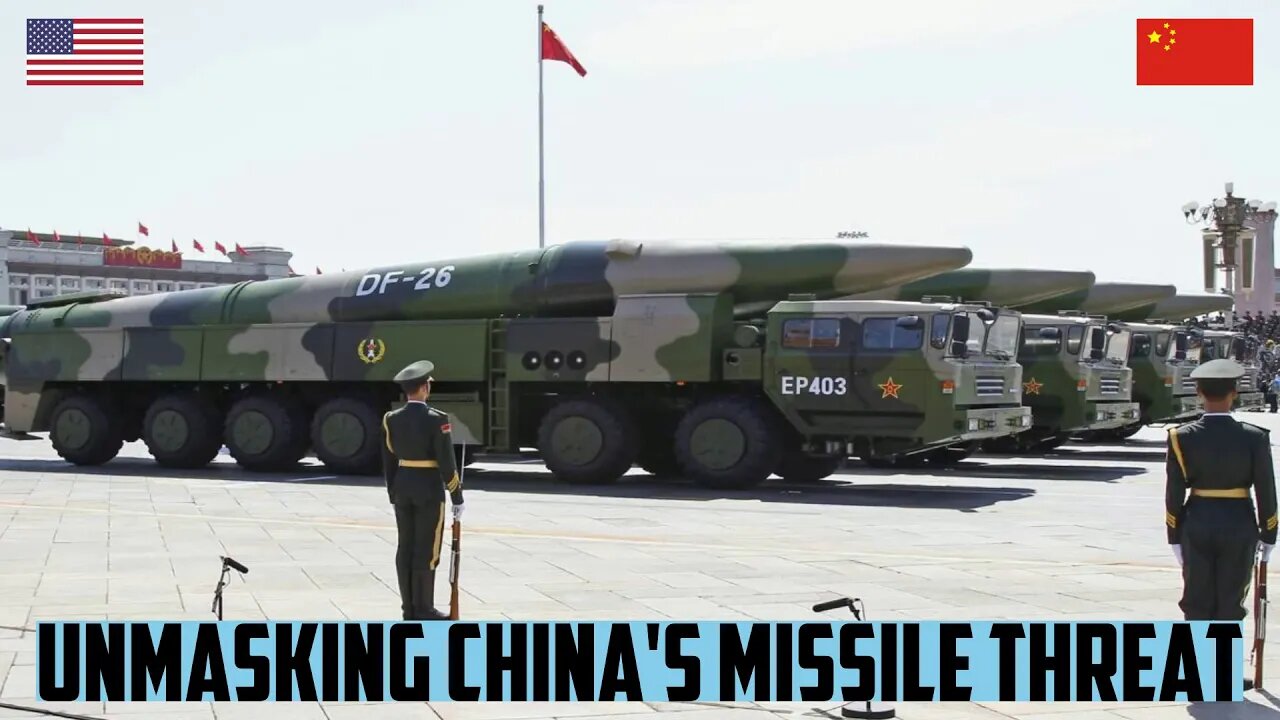Premium Only Content

US Launches Bold Strategy to Safeguard Asia's Security
Connect with us on Facebook: https://www.facebook.com/profile.php?id=100087951995959
Twitter: https://twitter.com/shieldwall_d
Chapters:
Unmasking China's Missile Threat - 0:00
Redefining the US Approach in Asia - 1:07
Strengthening Defense and Deterrence Capabilities - 4:26
Conclusion and Closing remarks - 5:26
In the modern era, the rise of China's military capabilities presents a profound challenge to the status quo, reshaping the strategic landscape in the Asia-Pacific region. This article explores the evolving US approach in response to China's burgeoning missile threat, specifically the US military's strategic shift from relying heavily on large bases to dispersing assets across smaller outposts. China's missile threat has surged in recent years, fundamentally changing the strategic calculus in Asia. The People's Liberation Army Rocket Force, the branch of China's military responsible for its missile arsenal, has experienced a significant surge in its capabilities. China now boasts over 1,300 ballistic missiles capable of reaching targets in the Asia-Pacific region, including major US bases in Guam. Notably, the development of hypersonic missiles, which can evade missile defense systems due to their unpredictable flight paths, further highlights the vulnerability of US bases. Consequently, the US has had to reassess its strategy to maintain deterrence and effectively respond to potential conflicts.
Redefining the US Approach in Asia.
The realization of the increasing vulnerability of larger military installations in the Asia-Pacific region has catalyzed a pivotal shift in US military strategy. This shift aims at mitigating the risk posed by China's advanced and expanding missile capabilities. The focal point of this new approach is the dispersal of assets - weaponry, troops, and command posts - across a variety of smaller, less conspicuous outposts in strategic locations. The dispersion strategy aims to complicate the decision-making matrix for Beijing. By not concentrating troops and assets in a single location, it becomes harder for China to land a decisive blow on the US military presence in the region. This approach effectively creates a moving target for China, requiring them to manage a more complex operation in the event of an attack. Moreover, the dispersion of forces also allows for more flexibility in troop and asset deployment. Smaller, more mobile units can be repositioned more swiftly, allowing for rapid response to changing battlefield conditions. This strategy aims to give the US an advantage in terms of adaptability and agility in conflict scenarios. Key to the implementation of this strategy is the creation of Air Mobility Teams. These are small, agile teams designed to quickly convert any location into a temporary military base. This includes creating landing strips for aircraft in remote locations and setting up crucial infrastructure, such as refueling points.
====================================
#shieldwall #shieldwalldefense
We appreciate all of our viewers and supporters. Thank you.
====================================
Fair use is the right to use a copyrighted work under certain conditions without permission of the copyright owner. The doctrine helps prevent a rigid application of copyright law that would stifle the very creativity the law is designed to foster. It allows one to use and build upon prior works in a manner that does not unfairly deprive prior copyright owners of the right to control and benefit from their works. Together with other features of copyright law like the idea/expression dichotomy discussed above, fair use reconciles the copyright statute with the First Amendment.
====================================
-
 4:36:31
4:36:31
FreshandFit
9 hours agoAfter Hours w/ Girls
61.5K105 -
 2:04:11
2:04:11
Side Scrollers Podcast
18 hours agoCracker Barrel CANCELS Rebrand + OG YouTuber Has Brain Tumor + More | Side Scrollers IN STUDIO
28.5K5 -
 19:26
19:26
GritsGG
10 hours agoChat Picked My Hair Color! All Pink Loadout & Operator Challenge!
5.6K3 -
 1:27:34
1:27:34
TruthStream with Joe and Scott
3 days agoArchitect Richard Gage: 911 truths and more #482
11.4K3 -
 3:47:17
3:47:17
The Pascal Show
18 hours ago $1.47 earnedBREAKING! Mass Shooting At Annunciation Church In Minneapolis Multiple Shot
21.5K7 -
 LIVE
LIVE
Lofi Girl
2 years agoSynthwave Radio 🌌 - beats to chill/game to
219 watching -
 2:02:49
2:02:49
Inverted World Live
9 hours agoAnnunciation Catholic School Shooting and Spiritual Warfare w/ AK Kamara | Ep. 99
199K27 -
 10:10
10:10
Robbi On The Record
3 days agoHollywood’s Hidden Messages: Predictive Programming & What’s Next
29K35 -
 4:43:34
4:43:34
Drew Hernandez
14 hours agoLGBTQ TERRORIST EXECUTES CATHOLIC KIDS IN MINNEAPOLIS
25.4K18 -
 2:17:08
2:17:08
FreshandFit
10 hours ago10 Top Red Pills About American Women
59.1K19